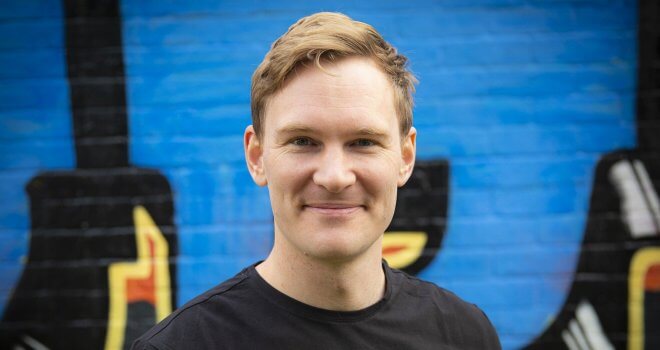Carl Pritchard: The Sensitivities Of Sensitivity

How does empathy, or a lack of it, impact on projects?
A pair of students in a recent training got into a heated discussion over the notion that one student felt the other was being excessively sensitive. The other replied by accusing the first of “privilege.” It did not continue peaceably.
It led me to ponder about our respective sensitivities and perceptions of others’ sensitivities. Toward that end, I went in search of insights on how this impacts our project environments.
Visrez Operations Director Stanimir Sotorov has over seven years’ experience in managing cross-functional teams. “The presence of so many people from different cultures, countries and religions lead sometimes to opposition between the teams. The last case was an example of gender sensitivity.”
He said that the situation got to the point of creating serious organizational concerns.
“One of the male team members refuses to work under female supervisor. On one side this was a clear violation of internal rules in the company, but on another hand, this has the potential to escalate between other male team members.
I couldn’t afford to kick out this employee because it would bring more dissatisfaction and more complaints. I’ve decided to sit with this employee on face-to-face discussion and to hear his point. After a short conversation, I decided to transfer him into another team under male supervisor and give him a warning for the violation of an internal rule.”
He says he also validated the concern with other team members to ensure there only the single male employee had the qualms.
Sotorov says that, in the long term, it proved to be a prudent decision. “The project was completed successfully. [The woman] who was in charge got a bonus for her work as well as some of the top- performing team members. The employee who was transferred to a new team left four months later, causing other problems, not related to sensitivity and regardless of our attempts to get him [aligned with] the company objectives.”
Chad Bruttomesso is a senior account manager with EPAM. He says in his 25 years on the job (including 16 in Japan), he’s encountered more than his share of conflict. “Historically founded cultural conflict can cause bias and create opportunity for difficult situations. When one culture has pre-conceived biases, often generations old,” Bruttomesso says it can become daunting to find a common ground to work towards a shared goal.
He goes on, “The impact was observed as people refused to listen to each other at times, were quick to discredit opinions and even went as far as outright verbal fights. This made it seem impossible at times to reach agreed directions and solutions required to fulfill the scope, schedule and cost of projects. These situations typically resulted in schedule and budget impact. Milestones would be missed as arguments prevented agreement on risk management plans, or scope/de-scoping exercises.”
He says that the key to succeeding in these environments is to plan, plan, plan. “Over the years I have learned to build time into project planning to accommodate additional time needed for team forming/storming and to acknowledge in the group differences pre-kick-off and negotiate ways we will manage conflict as it arises.”
Agile Coach Jim Hannon says while the project management community seems to be aware of heightened sensitivities, we still need to be reminded of our role in managing them. “I always instill in new PMs the need to learn about the various cultures in their teams and ensure they can converse on how these teams can work together.
“I have found that also if you spend some dedicated time before a planning session for a project and do what I call a get-to-know-each-others-culture [session], it pays large dividends. This is where the team does not do work but just gets to know each other on video or in person and breaks down barriers.”
“I actually had an issue where I tripped into a cultural issue, that was thousands of years old. I had Japanese programmer report to me. He always seemed very reluctant to deal with programmers and especially China. I brought this up numerous times and finally a colleague told me he came from a very traditional Japanese family and there was a longstanding issue between the Japanese and Chinese.”
Hannon continues, “It hurt the team greatly in that we needed to move this employee to a team that did not have global interaction.” Would Hannon have changed anything if he had it to do over? “I would have likely worked to help him understand how this truly impacted his career and worked with the counterparts closer.”
Sometimes, project managers see it as a function of just getting through the problem. Project Manager Essam Lofti says he’s seen the problem not just in individuals, but in organizations as a whole.
He says it can be a concern with the entire “performing organizations. The ethnicity is apparently affecting the selection of employees, especially in managerial levels.” Lofti doesn’t believe he’d change the situation, but does recognize it can be a detriment. He says the challenges come from “developing hidden lobbies across the organizations and the selection of employees for managerial levels…governed by loyalty [and] not experiences.”
The problem is not inherently universal. Project Management Consultant and CEO Porfirio Chen says there are places where the sensitivities genuinely don’t seem to exist.
“Born and raised in Panama where we have a truly mix of ethnic communities, I cannot recall having a serious problem in dealing with this issue of ‘heightened sensitivities’. I have encountered and dealt with stakeholders with strong opinions about issues or ways to solve problems, but not to a degree of being so sensitive about their identity, background, personal preference or anything else.”
He says part of this may stem from the nature of Panamanian culture. “My country is truly a ‘melting pot’ where we have been raised with persons with different cultures, religions or opinions since childhood.”
Managing Different Levels of Sensitivity
Bruttomesso says that no matter the nature of the differences, the key is to be proactive. He says this is a concern that will be with us for generations to come, and as such, transparency will be a critical element.
“Openly acknowledging differences, talking about them and guiding teams to a place of acceptance is required before true progress as a collective group can be made.”
He also believe we should be ready for different versions of this problem in the years ahead. “I think it will become more complex as time passes with more subtle, but equally challenging differences evolving.”
Sotirov concurs that a proactive approach is essential to weaving through the sensitivity mine field. “Proactive, 100%! For every case with sensitivity, I’m trying to get a practical insight into what has happened and what was my behavior in this situation.
This may give me a new idea of how to approach the same situation next time differently in order to get better results with…minimum consequences for the involved parties.”
He also points out that some of the concerns can be addressed by organizational fiat and protocol.
“There are internal rules in the company where political discussions are strictly forbidden. Abuses based on gender, religion or because someone’s personal references are under careful review and consequences can be serious for the accused party in case of proven guilt. There are also cases of not-so-major disagreements where we primarily use the mediation approach and try to solve the situation quickly.”
Hannon believes in a similar approach. “I attempt to create an open and safe team environment where you as a PM can understand all levels of sensitivities. I try to be very proactive and bring the issues of culture up at lessons learned and listen to what the team is saying.”
He also believes the condition will be with us for some time to come. “I think culture and sensitivities will get much more focus as we expand the global reach of teams.”
If the hurdle of cultural sensitivity is going to be with us for the foreseeable future, the challenge is figuring out how to deal with it.
Hannon says project managers should learn from those who have been down the multi-cultural, sensitive road. “One thing is to have mentors for new PMs. There is little to no education on how to truly run global teams. You need to learn from someone who has been there.”
Lofti believes the secret may rest with the unwritten rules of organizations.
“Every organization has both a formal structure, shown by the organization chart, and in informal structure that forms the culture of how the organization works. This informal structure, the culture, is created by the unwritten rules of the organization, and it can have a significant impact on the success or failure of any internal project.”
Chen subscribes to the notion that knowing such rules, as well as the people who have to live with them, is critical. “The approach in dealing with project stakeholders is taking time to know them and cultivate an honest relationship through time. Every experienced project manager understands this…Managing stakeholder expectations is part of the job that a project manager must do throughout the project lifecycle to be effective.”
He goes on to say that the project manager has a significant responsibility if s/he wants to succeed in this environment. “Dealing with a person that participates in a project who is ‘very sensitive’ to either his or her gender, ethnicity, religion or any other issue is something that the project manager must manage and deal personally with.” He says the project manager needs to work with individuals on an individual basis, “so that it does not affect the rest of the project team members’ performance.”
Sotirov doesn’t believe this concern is going away any time soon. “People will realize at the end that this diversity is something normal for the work environments and you need to adapt in the new reality – this applies for both sides “guilty” and “victim”.
People are different by nature and you can’t blame someone for this. Like you’ve learned to work on different projects with different requirements and stakeholders, in the same way, you need to learn to work with ‘different-than-your-understandings’ people.”
He’s also confident that there’s no running away from the problem. “You need to accept that the sensitivities for employees are the same sensitivities for your management. You must not hide and wait for the problem to pass around you.
You must not allow this to escalate in the team because this is damaging for the morale, work motivation and the team’s overall performance. We need to be very careful in our approach and the assessments we give to particular situations.”
Chen says it’s a function of knowing how to treat others as professionals and to expect the same in return. “As long as you respect the culture, ethnic background and culture, religion or any personal preference that an individual has and you are able to separate that personal preference of the individual from the project decisions, you have a better chance to be successful in your job and also have a better relationship with that individual. This is known as being a professional.”
Bruttomesso put it somewhat more succinctly. “Approach everyone with equal respect, kindness and an open mind to the unexpected caused by differences that may arise.”
Carl Pritchard is the U.S. Correspondent for Project Manager Today and welcomes your comments and insights at carl@carlpritchard.com




